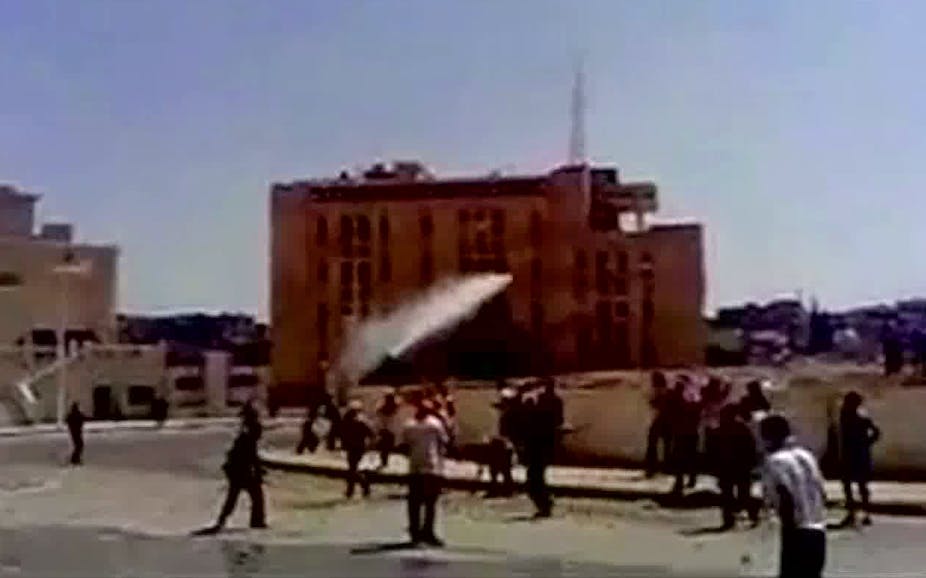As we watch the spot fires of democratic uprisings flicker across Syria it is worth remembering that the government’s response so far has been mild.
The religious tensions of the country and disaffection with the Assad dynasty have found a voice before. A voice that was crushed so ruthlessly that 30 years on it is still silent.
Whilst it’s easy to lump Syria into some sort of ethnically homogenous generic Arab state, it does actually harbour significant diversity amongst its citizens.
The majority of citizens are Arabs, but mixed in with this are significant populations of other groups, including Turks, Armenians, Greeks and Kurds. Religious plurality is also present, with Syria being home to Sunnis (about 80% of people), Shi’a Muslims, Druze, Christians and Jews.
Most significantly, the Shi’a population are almost all adherents to the Alawite branch, an offshoot that most conservative Sunnis would consider heretical. The Alawites guard their beliefs closely, but a key tension with the Sunnis is that beyond Mohammed they recognise other prophetical authorities and incarnations of God.
Making up just 13% of Syrians, you may expect that these mystical Shi’a might vanish into the crowds. However, what keeps them prominent in Syria is that the ruling family are Alawites. The Alwaite influence also extends into the top tiers of the military and business hierarchy in the country.
It was this demographic quirk that led to perhaps the most ruthless examples of counter-insurgency ever carried out in the Arab world.
Staring in the mid 1970s there was a Sunni inspired insurgency in Syria organised by The Muslim Brotherhood. They didn’t like the Assads, their apostate Alawi ways and the general secularism of the Ba’ath party.
Guerrillas made small scale attacks on the regime for a few years, including an unsuccessful assassination attempt on the President Hafez al-Assad at a state function. By the time dessert was cleared away, Hafez had responded by ordering the execution of over 1,000 Islamists that he was holding in detention.
As a bastion of conservative Islam, the town of Hama was a stronghold of this insurgency, and when, in early 1982, a squad of soldiers stumbled on a Muslim Brotherhood hideout there and were ambushed, a general uprising ensued throughout the town. President al-Assad couldn’t ignore such a blatant revolt and decided to make an example of the rebels.
Anyone wanting to add to the mountain chain of books about counter-insurgency tactics that have been generated in the last decade needs to include a chapter on Hama.
As far as successfully defeating an Islamist insurrection goes, Hama is the textbook recipe for success … as long as you have no moral qualms whatsoever and are happy to completely flout any consideration of human rights or judicial process.
The rebellious Hama was surrounded by those elite military units most loyal to the government. In fact they were led by Assad’s brother Rifaat. They spent three weeks bombing and shelling the ancient town, reducing it to rubble.
Tanks and infantry were meanwhile moving through block by block and killing anyone left alive or rounding them up for mass executions. A medieval style sack of the town lasted for days and when that was over, cooler headed secret police types moved meticulously through the ruins to finish off any survivors.
Nobody knows how many died, but estimates vary between 20-40,000. What is certain is that the Muslim Brotherhood never operated with any strength in Syria again.
Although Assad tried to limit coverage of the Hama massacre, enough reports got out to ensure that Syrian citizens knew the whirlwind that was reaped by the trouble-makers.
The question is of course whether in dealing with the democracy activists President Bashar al-Assad will decide to copy his father’s example. He may be a mild mannered type, but he’s surrounded by many of Bashar’s old cronies who marked the Hama lesson well.
Perhaps the relative success he has enjoyed so far in stamping out protests will keep him happy, but on the other hand, it may also encourage him to inch towards ever more extreme measures.
What is certain is that more than a generation after Hama, rising up against the Syrian government takes a very special brand of courage.

